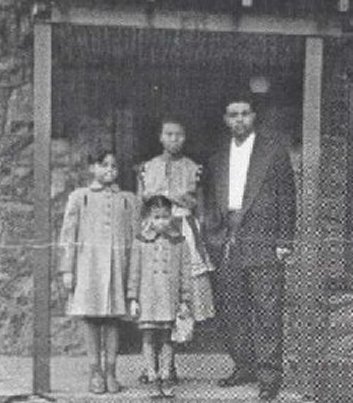
Esther
Brown
In 1948,
Esther Brown, a 30-year-old Jewish
housewife in Merriam, Kansas (a suburb
of Kansas City), began a fight for
racial justice in a Kansas school
district. Shocked by the condition
of an all-black school in the South Park
neighborhood of her African-American
maid, Brown took her complaints to the
all-white school board, which was then
supporting a bond issue for a
well-equipped new school for
whites. The school board seemed
unmoved by the fact that students at the
all-black, 88-year-old, two-room Walker
School had to use an outhouse on the
dirt playground, walk home for lunch,
and attend a school with no principal
and just two teachers. The board's
concession to install new light bulbs
caused Brown to leave the meeting
feeling "nauseated."
Esther grew increasingly active in the
fight for better schools for
African-Americans. She organized
meetings of African-American parents and
tried to convince white parents to join
her cause. "I know none of you
would want your children educated under
such circumstances," she told a crowd of
350 at a meeting at the new white
school. "They're not asking for
integration--just a fair shake."
Faced with intransigence, Esther asked
the Kansas City, Kansas chapter of the
NAACP to file suit, and then raised
money for the legal battle, making
pitches at a Billie Holliday concert and
anywhere else she thought she might find
supporters. Dissatisfied with her
first counsel, she fired him, and hired
black Topeka attorney Elisha Scott to
pursue the case against the South Park
district. As the suit progressed,
Brown helped organize a boycott of the
all-black school, and set up new private
schools to educate the students
instead. Brown paid a price for
her activism. She was threatened,
a cross was burned in her yard, and her
husband fired from his job. In
1949, the Kansas Supreme Court, in
Webb
vs School District No. 90, held
that blacks had the right to attend the
new, previously all-white, South Park
school.
Esther's next target was Topeka, where
she assisted in an effort that had been
launched by the NAACP to integrate the
city's elementary schools. Lucinda
Todd, Secretary of the Topeka branch,
years after the Brown v
Board of Education decision
said of Esther Brown's involvement: "I
don't know if we could have done it
without her."
Esther Brown died in 1970. In
1975, a new public park in Merriam,
Kansas, across from the site of the
former all-black school, was dedicated
in her honor.
|

Oliver Brown
and family
The Brown of Brown vs
Board of Education of Topeka is
Oliver Brown. Oliver Brown and his
daughter, Linda, are remembered today,
while the thirty-three plaintiffs,
including thirteen parents and twenty
children are largely forgotten, simply
because Oliver Brown was listed first in
the complaint. Had Oliver not agreed
to participate in the suit, students today
might talk of the famous case, say, of Carper v
Board of Education or Fleming
v Board of Education (two of
the other adult plaintiffs who challenged
Topeka's policy). Oliver Brown
became involved in the case after being
asked to become a plaintiff by attorney
Charles Scott, an old childhood
friend.
Oliver Brown, 32 at the time the suit
against the school district was brought,
served as an assistant pastor at Topeka's
black Methodist church and as a welder for
the Atchison, Topeka, and Santa Fe
Railway. A former teacher described Brown
as "an average pupil and a good
citizen." Shy, hard-working,
religious, and clearly no militant, Brown
became the non-threatening face of the
lawsuit.
Brown and his wife had three children,
ages 8, 4, and 5 months at the time of
trial. Linda Brown attended
all-black Monroe Elementary, a school
located 21 blocks from their home on West
First Street. Oliver Brown testified
that "many times [Linda] had to wait
through cold, the rain, and the snow" for
a bus to take her to Monroe, even though
the family lived only seven blocks from an
all-white elementary school. Oliver
also testified that Linda's route to her
bus stop took her over a "main
thoroughfare...with a vast amount of
traffic."
By the time the Supreme Court announced
its decision in Brown, and the Topeka
schools desegregated, Linda had moved on
to a previously integrated junior high
school. Linda's siblings, however,
enjoyed the benefits of a desegregated
elementary school education.
Oliver Brown and his family moved to
Springfield, Missouri in 1959 where he
served as a minister. He died of a
heart attack in 1961.
|